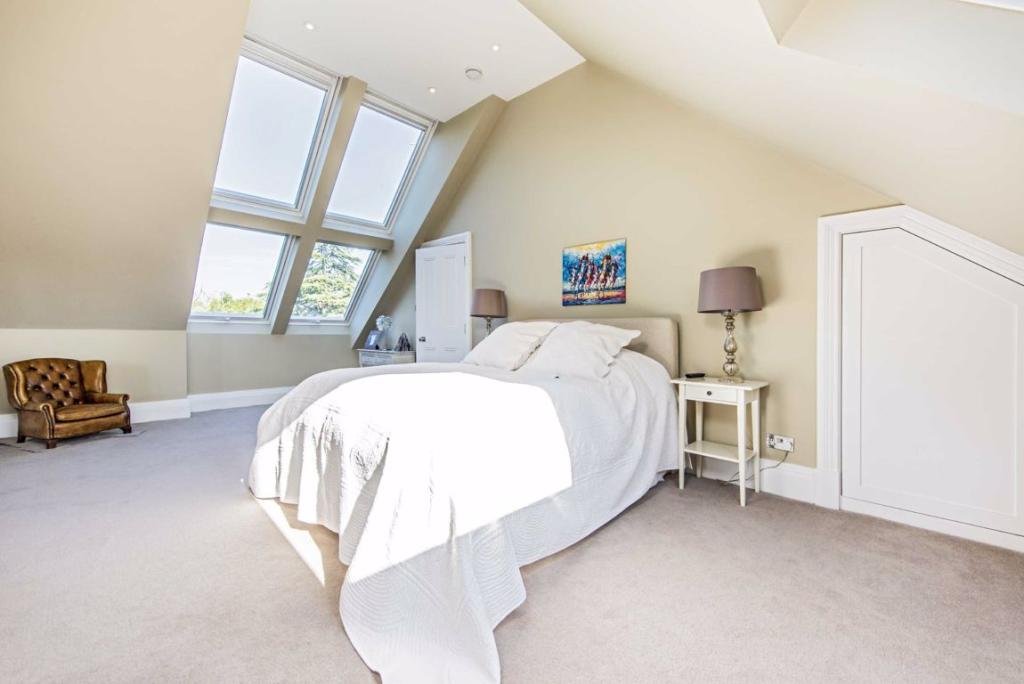A loft conversion is one of the most effective ways to add living space and increase property value without moving house. However, not every home is automatically suitable. Before starting, it’s important to understand whether your property meets the key requirements for a safe and practical conversion. Speaking with trusted professionals such as Loft Conversions Barnet ensures you get expert guidance on feasibility and design. Working with an experienced Loft Conversion Company in Barnet helps you avoid costly mistakes and guarantees that your investment adds real long-term value.
1. Adequate Head Height
The first sign of suitability is headroom. Most building regulations require a minimum of 2.2 metres of head height across the majority of the loft space. Measure from the floor to the highest point (often the ridge beam). If your loft feels too cramped to stand comfortably, structural changes may be needed before it can become a usable room.
2. Roof Structure
The type of roof plays a huge role. Older properties often feature traditional cut roofs with rafters, which are easier to convert because they leave more open space. Modern trussed roofs, which have cross beams, can still be converted but may require additional work such as steel supports. Consulting a Barnet Loft Conversions Company ensures you get accurate advice tailored to your property’s roof type.
3. Floor Strength
Loft floors are not originally designed to support the weight of daily living. To convert safely, the joists usually need to be reinforced. This step is crucial if you’re planning to use the loft as a bedroom, office, or playroom. Professional builders assess the structure and ensure it meets safety and building regulations.
4. Access and Staircase Placement
A conversion is only practical if you can access it safely. This often means fitting a new staircase. The placement must comply with regulations, maintain fire safety, and avoid taking up too much room on the floor below. Using space under existing stairwells or in hallways is a common solution.
5. Lighting and Ventilation
A loft should feel like a natural extension of your home, not a dark attic. Consider whether roof windows, skylights, or dormer windows can be installed to provide daylight and fresh air. Good ventilation also prevents condensation and dampness, both of which can damage interiors.
6. Potential for Plumbing and Utilities
If you’re adding a bathroom or even a small en-suite, plumbing access is a must. Similarly, you’ll need to consider electrical wiring, heating, and insulation. Professional planning ensures your loft stays comfortable year-round and functions like any other room in your house.
7. Planning Permission and Building Regulations
Many loft conversions fall under permitted development, but not all. Factors such as roof extensions, conservation areas, and property type can affect what permissions you need. A qualified builder or architect can confirm requirements and ensure all work is compliant with local rules.
8. Impact on Property Value
One of the main reasons homeowners choose a loft conversion is the added property value. On average, a well-designed conversion can increase value by up to 20%. However, this only holds true if the loft is both structurally sound and designed to complement the rest of the property. Careful planning with an experienced team ensures the project delivers a return on investment.
9. Suitability for Different Conversion Types
Even if your loft is suitable, the type of conversion may vary. Options include:
- Velux conversion: Best for lofts with plenty of head height, requiring minimal structural change.
- Dormer conversion: Adds extra space and natural light, ideal for limited headroom.
- Hip-to-gable conversion: Common for semi-detached homes, creating more usable floor space.
- Mansard conversion: Offers maximum space but usually requires planning permission.
Each option comes with benefits and requirements, so expert advice is key to making the right choice.
10. Signs Your Loft is Ready for Conversion
- The head height exceeds 2.2 metres.
- The roof is in good condition and structurally sound.
- There’s potential to install a staircase without losing too much space.
- Utilities such as plumbing and electricity can be accessed easily.
- Natural light sources (like skylights or dormers) can be added.
- Your property is not heavily restricted by planning regulations.
If your home ticks most of these boxes, you’re likely in a strong position to move forward with a loft conversion.
Final Thoughts
A loft conversion is a smart way to create more space and increase your home’s value, but only if the property is suitable. By checking factors such as headroom, roof structure, access, and utilities, you can get a clear idea of feasibility. For professional advice tailored to your home, it’s always best to consult experts.
Is your property suitable for a loft conversion? Don’t leave it to guesswork—get a professional assessment today. The team at Loft Conversion Barnet has years of hands-on experience, offering honest guidance, innovative designs, and fully compliant builds. Whether you’re looking for a cosy bedroom, modern office, or family playroom, we’ll help you unlock your home’s hidden potential.
Take the first step towards transforming your home—contact Loft Conversion Barnet now to arrange a consultation and discover how we can make your dream loft a reality.
